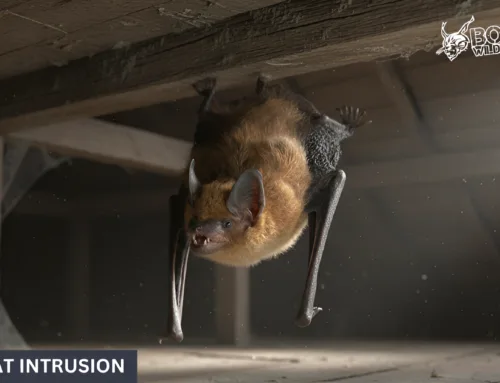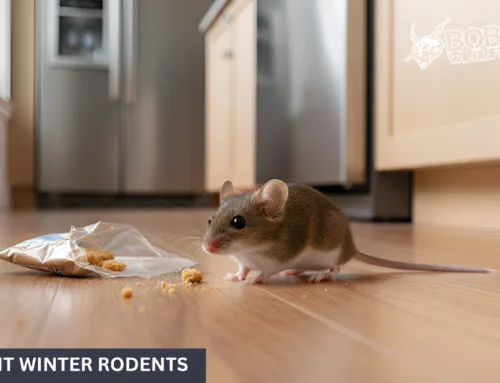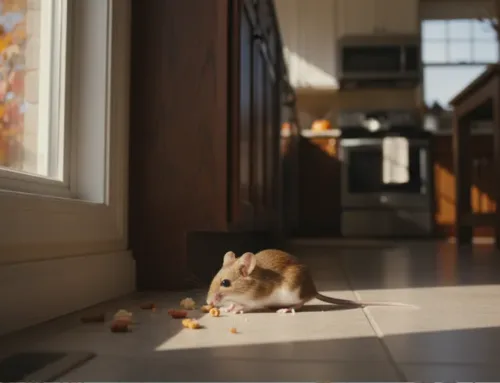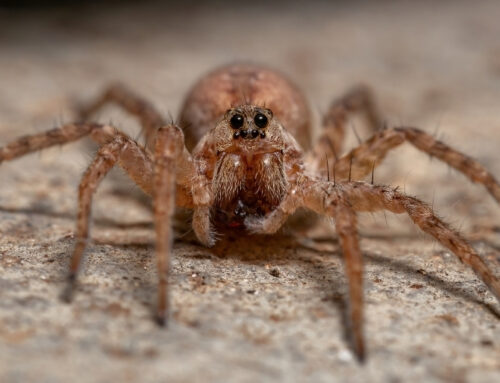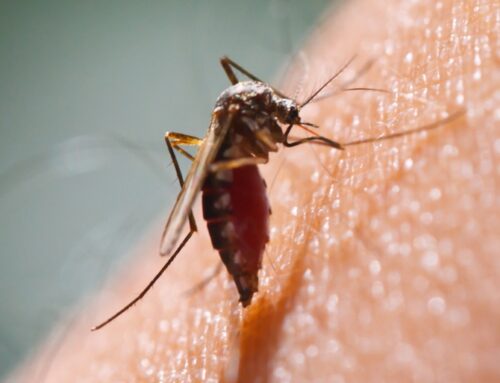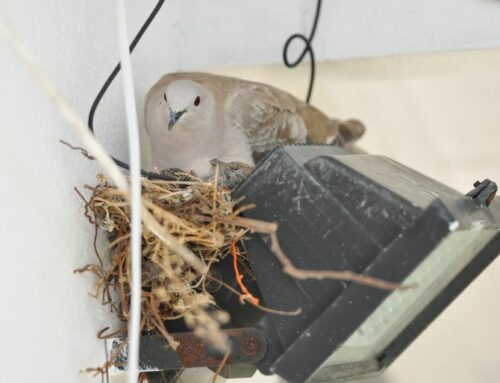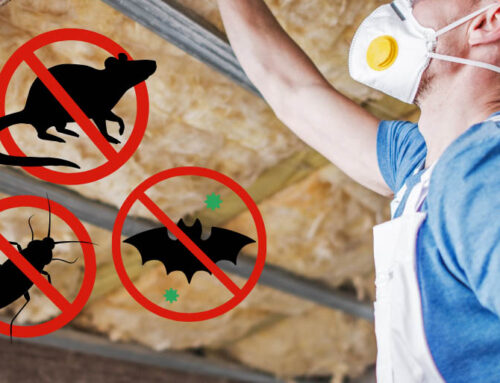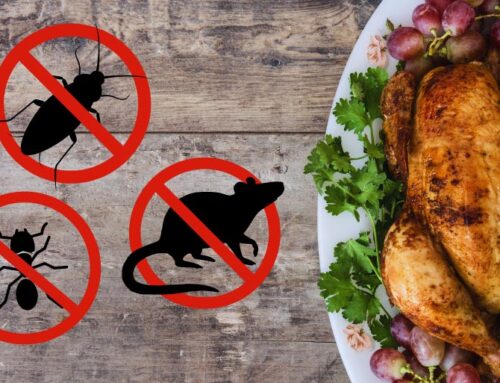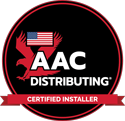What You’ll Learn About Safe Wasp Nest Removal:
- Quick Answer: What’s the Safest Way to Get Rid of a Wasp Nest?
- Should You Try Removing a Wasp Nest Yourself?
- How to Safely Remove a Wasp Nest: A Step-by-Step DIY Guide
- What Wasp Nests Look Like (And Where They Hide Around Your Home)
- How to Keep Wasps Away (And Prevent New Nests)
- When to Call a Wasp Control Expert in Des Moines
Quick Answer: What’s the Safest Way to Get Rid of a Wasp Nest?
If you’re staring at a buzzing wasp nest near your porch, garden, or garage—pause before grabbing a spray can.
The safest way to get rid of a wasp’s nest is to assess the size and location from a safe distance, and if there’s any risk of stings or structural damage, call a licensed pest control expert right away.
For small, inactive nests in open areas, it may be possible to remove the wasp nest safely using DIY methods like a long-range wasp spray at dusk.
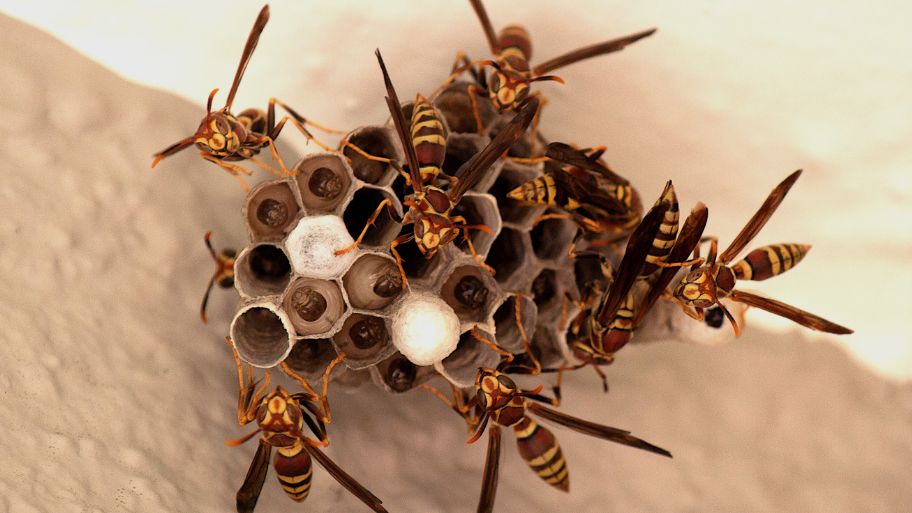
But if the nest is active, hidden, or near areas where your family or pets spend time, professional help is the smart, sting-free option.
Locally trusted and fully licensed, Bobcat Wildlife & Pest Management has helped Des Moines homeowners eliminate wasp nests quickly, cleanly, and safely—without the guesswork or danger.
Should You Try Removing a Wasp Nest Yourself?
If you’re wondering whether you should take care of the nest yourself, you’re not alone. Many Des Moines homeowners weigh this option the moment they notice wasp activity nearby.
The honest answer? It depends—on both the nest and your comfort level.
Before deciding how to get rid of wasps on your own, think through a few key questions:
- 1
Where is the nest located? Nests tucked into attics, behind siding, or built near patios and children’s play areas can be especially difficult—and dangerous—to access.
- 2
Is the nest active and growing? A buzzing colony of wasps can become aggressive quickly if disturbed.
- 3
Do you or a family member have allergies? For those sensitive to stings, even one wasp encounter can turn serious fast.
DIY removal isn’t off the table for every situation, but it’s not without risk. While some small nests in easy-to-reach places may seem manageable, many homeowners underestimate how fast things can escalate.
If the situation feels unpredictable—or if you’re second-guessing your safety—it’s best to avoid DIY and bring in an expert.
At Bobcat Wildlife & Pest Management, our local Des Moines team is trained to remove wasp nests safely and handle every scenario with care and speed—so you don’t have to take chances.
How to Safely Remove a Wasp Nest: A Step-by-Step DIY Guide
For those who are comfortable tackling a wasp nest on their own, here’s a precise, safety-first guide on how to safely remove the nest using calm, effective steps.
🧭 What You’ll Need:
🪜 Step-by-Step Instructions:
- 1
Wait until dusk or early dawn – Wasps are sluggish and less aggressive in cooler, low-light hours.
- 2
Approach slowly and quietly, staying out of direct flight paths.
- 3
Apply spray or soapy water from a safe distance. Saturate the nest thoroughly and step away immediately.
- 4
Observe from afar over the next 24 hours. If wasp activity continues, repeat treatment the next evening.
- 5
Once inactive, use a long stick or pole to knock the nest into a sealed trash bag. Wear gloves and avoid direct handling.
- 6
Seal the bag tightly and place it in a secure outdoor trash container with a fitted lid.
⚠️ Skip this process entirely if the nest is out of reach, inside a wall, or surrounded by heavy wasp activity.
If any step feels too risky or uncertain, don’t push through it—call Bobcat Wildlife & Pest Management. We help Des Moines homeowners get rid of wasp nests safely every season, using proven techniques and professional-grade protection.
What Wasp Nests Look Like (And Where They Hide Around Your Home)
Not every strange lump on the wall or under the eaves is a wasp nest—but it helps to know what you’re looking for before taking action. This quick guide can help you spot and identify common wasp nests found around Des Moines homes and gardens.
Paper Wasps
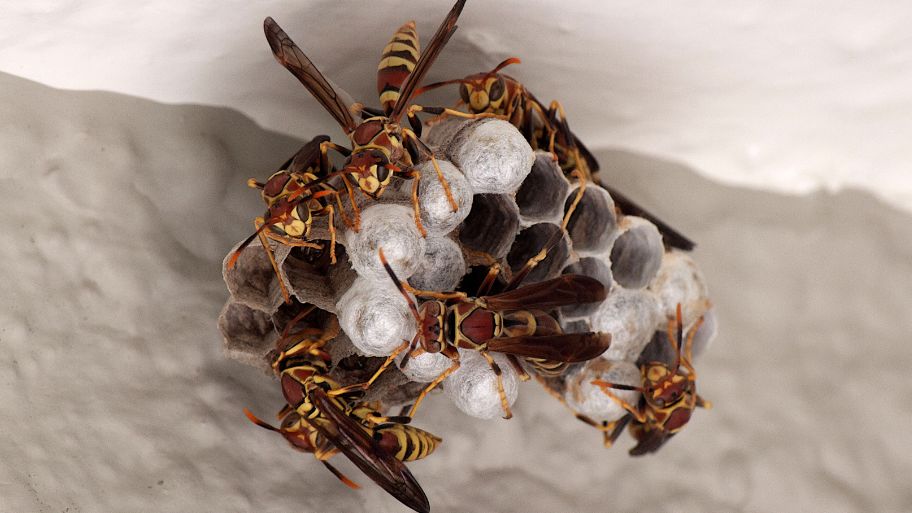
Shape: Open and umbrella-like, with hexagonal cells you can see from below
Size: Usually small to medium
Material: Gray, papery texture
Where you’ll find them: Hanging from porch ceilings, under eaves, or along deck railings
Yellowjackets
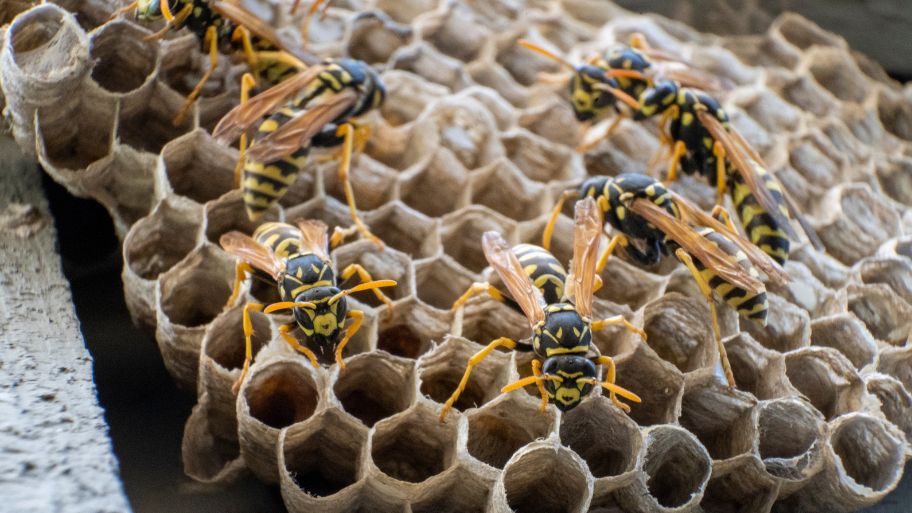
Shape: Enclosed, football-shaped, and often hidden
Material: Dense paper pulp
Where you’ll find them: Underground burrows, inside walls, behind siding, or tucked into yard debris piles
Bald-Faced Hornets (a type of wasp)
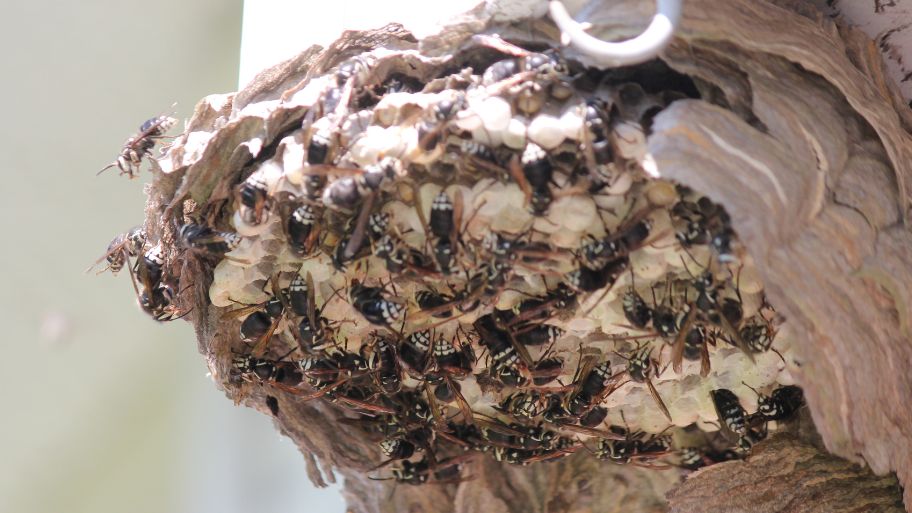
Shape: Large, round, and fully enclosed—almost like a gray paper lantern
Where you’ll find them: High up in trees, attached to sheds, or tucked in roof peaks
🌿 Where Nests Hide Around the Home & Garden
Wasp nests aren’t always out in the open. Many are built in quiet, shaded, or overlooked places. Around Des Moines homes, it’s common to find nests in:
If you’ve been noticing more wasps buzzing in and out of the same area—but can’t immediately see a nest—it may be tucked inside a shaded crevice or overgrown spot.
This is especially common when homeowners wonder how to get rid of wasps in the garden without knowing exactly where the nest is hiding.
Understanding what you’re looking at is the first step. Whether you’re planning to handle it yourself or just want to monitor the area, being able to recognize a wasp nest gives you the confidence to decide what comes next.
How to Keep Wasps Away (And Prevent New Nests)
Once you’ve dealt with a wasp nest, the next question is: how do you make sure it doesn’t come back? The good news? With a few simple changes around your home and garden, you can make your space a lot less appealing to wasps.
Here’s how to get rid of wasps—and stop them from building nests in the first place.
🧱 1. Seal Gaps and Entry Points
Wasps love to squeeze into tight spots to build their nests. Walk around your home and check for:
- Gaps around vents, soffits, and siding
- Cracks near windows or rooflines
- Unsealed areas in sheds or garages
Use caulk, mesh, or weatherstripping to close off those spaces before spring hits.
🗑 2. Eliminate Food Sources
Wasps are drawn to sweet drinks, meat scraps, and anything with strong scent.
To help prevent that:
- Keep outdoor trash cans tightly sealed
- Rinse out recyclables before tossing them
- Clean up crumbs, fruit scraps, or pet food right away
- Cover compost bins and avoid overripe garden produce
This is especially helpful if you’ve been wondering how to get rid of wasps in the garden—many nests form near fruit trees or uncovered trash bins.
🌿 3. Trim Overgrowth and Yard Clutter
Thick shrubs, low tree branches, and tucked-away garden corners can become nesting zones.
Be sure to:
- Keep bushes and hedges trimmed back
- Remove unused yard furniture, grills, or wood piles
- Check for signs of early nest-building in spring
🪶 4. Try Wasp Deterrents
Some homeowners also use natural or visual repellents to keep wasps away:
- Decoy wasp nests (wasps avoid competing colonies)
- Wasp-repelling plants like mint, citronella, or wormwood
- Essential oil sprays with peppermint or clove oil
While results vary, they can add an extra layer of protection—especially in high-risk areas like patios and gardens.
Want a sting-free summer in Des Moines? Prevention starts in spring.
A little prep now can save you the trouble (and stress) of dealing with another wasp nest later in the season.
When to Call a Wasp Control Expert in Des Moines
If you’ve been weighing the risks and still aren’t sure whether to handle a wasp nest on your own, here’s the rule of thumb: when safety, accessibility, or certainty becomes a concern—it’s time to call a professional.
Here are some clear signs that it’s no longer worth the DIY gamble:
⚠️ The Nest Is Hard to Reach
Whether it’s in a roofline, attic vent, or buried underground, any nest that’s difficult to access increases the risk of surprise stings or incomplete removal.
🐝 The Wasp Activity Is Aggressive or Unpredictable
If wasps swarm when you get near—or if you’re not even sure how active the nest is—it’s best to let trained professionals assess the danger.
👪 There Are Kids, Pets, or Allergies in the Home
Wasps don’t need much provocation to sting. If anyone in your household has a known allergy or limited mobility, DIY isn’t worth the risk.
🛑 You’re Not 100% Sure How to Safely Remove a Wasp Nest
Hesitation is a good reason to pause. If you’re uncertain about how to get rid of a wasp’s nest without getting stung—or worried about making things worse—you don’t have to handle it alone.
At Bobcat Wildlife & Pest Management, we’ve been helping Des Moines families safely remove wasp nests since 2008. Our team is:
- Locally trusted and fully licensed
- Fast to respond, especially during peak season
- Trained to treat nests discreetly and thoroughly
- Committed to keeping your home, garden, and family safe
Whether the nest is small or overwhelming, you’ll have peace of mind knowing it’s handled professionally—with no guesswork, no stings, and no second-guessing.
Serving Des Moines and surrounding areas since 2008, Bobcat Wildlife & Pest Management has safely removed hundreds of nests just like yours.
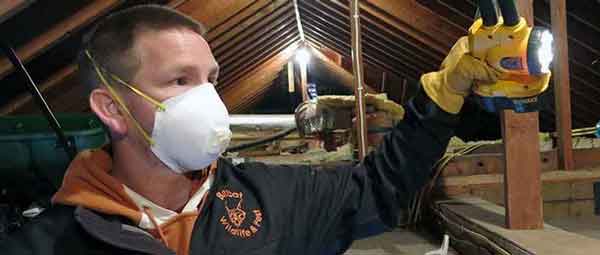
About the Author
Gene Spaulding, Owner and Founder of Bobcat Wildlife & Pest Management, has been at the forefront of pest and wildlife control since 2008. With over 17 years of hands-on experience, Gene combines his expertise and passion to deliver effective and humane pest management solutions to homeowners and businesses across the Des Moines Metro area. Guided by the motto “Your Property, Our Priority,” Gene ensures that Bobcat Wildlife & Pest Management remains a trusted partner for comprehensive pest and wildlife services.

